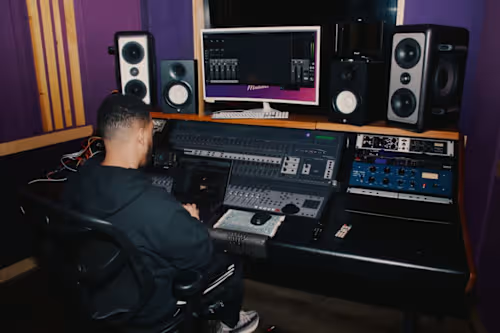
Dolby Atmos Mixing Engineer
Contact for pricing
About this service
Summary
Luis provided top-tier engineering with a track record of 175,000,000 streams. His Dolby Atmos mixing for GRAMMY legends like Snoop Dogg & Lecrae elevates every track into an immersive, extraordinary experience. Dolby Atmos is about "Experience" this gig is about taking your regular stereo mix into a immersive experience for surround sound listeners!
What's included
ADMBWF Master
Final Master that joins your Stereo Release.
Stereo Master (if Applicable)
In some cases, if hired, Luis Cancion will Master both Stereo and Dolby Atmos Versions.
Example projects
Skills and tools
Mixing/Mastering
Music Producer

Logic Pro
Industries
Music



